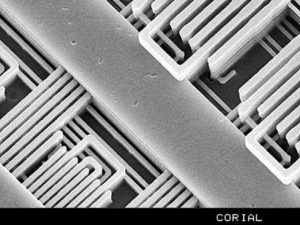Read Microcontroller PIC18F2680 Firmware
Read Microcontroller PIC18F2680 unlocked status can extract firmware out from the flash and eeprom memory directly and replicate the code to other blank MCU PIC18F2680 which will provide the cloned units.
This family of devices offers the advantages of all PIC18 microcontrollers – namely, high computational performance at an economical price – with the addition of high-endurance, Enhanced Flash program memory.
In addition to these features, the PIC18F2680 family introduces design enhancements that make these microcontrollers a logical choice for many high-performance, power sensitive applications. All of the devices in the PIC18F2680 family incorporate a range of features that can significantly reduce power consumption during operation.
Key items include:
· Alternate Run Modes: By clocking the controller from the Timer1 source or the internal oscillator block, power consumption during code execution can be reduced by as much as 90%.
· Multiple Idle Modes: The controller can also run with its CPU core disabled but the peripherals still active. In these states, power consumption can be reduced even further, to as little as 4% of normal operation requirements.
· On-the-fly Mode Switching: The power managed modes are invoked by user code during operation, allowing the user to incorporate power-saving ideas into their application’s software design.
· Lower Consumption in Key Modules: The power requirements for both Timer1 and the Watchdog Timer have been reduced by up to 80%, with typical values of 1.1 and 2.1 ìA, respectively.
· Extended Instruction Set: In addition to the standard 75 instructions of the PIC18 instruction set, PIC18F2680 devices also provide an optional extension to the core CPU functionality. The added features include eight additional instructions that augment indirect and indexed addressing operations and the implementation of Indexed Literal Offset by reading MCU content.
Addressing mode for many of the standard PIC18 instructions.
All of the devices in the PIC18F2680 family offer ten different oscillator options, allowing users a wide range of choices in developing application hardware. These include:
· Four Crystal modes, using crystals or ceramic resonators
· Two External Clock modes, offering the option of using two pins (oscillator input and a divide-by-4 clock output) or one pin (oscillator input, with the second pin reassigned as general I/O).
· Two External RC Oscillator modes with the same pin options as the External Clock modes
· An internal oscillator block which provides an 8 MHz clock (±2% accuracy) and an INTRC source (approximately 31 kHz, stable over temperature and VDD), as well as a range of 6 user selectable clock frequencies, between 125 kHz to 4 MHz, for a total of 8 clock frequencies. This option frees the two oscillatorpins for use as additional general purpose I/O.
Tags: read microcontroller protected archive,read microcontroller protected code,read microcontroller protected content,read microcontroller protected data,read microcontroller protected eeprom,read microcontroller protected file,read microcontroller protected firmware,read microcontroller protected information,read microcontroller protected memory,read microcontroller protected program


